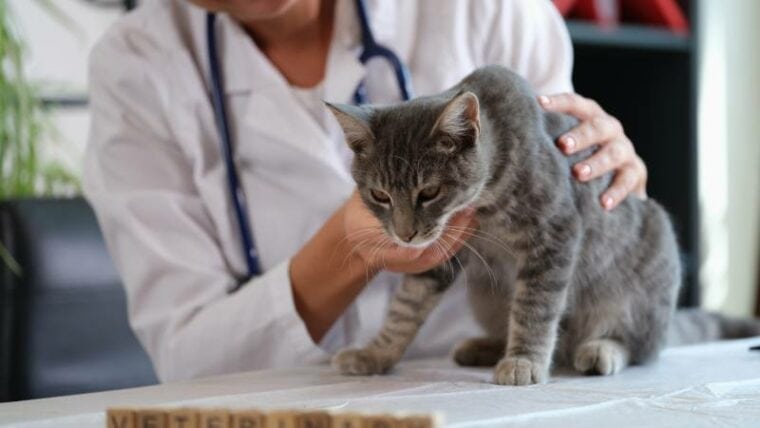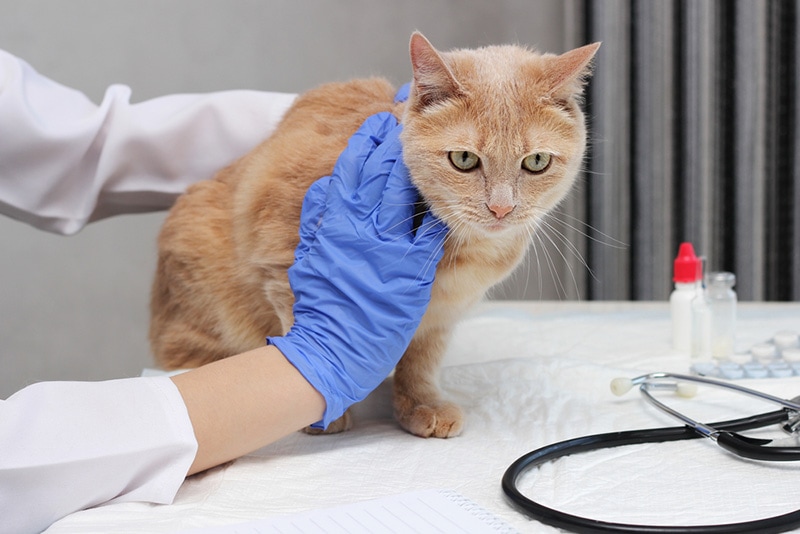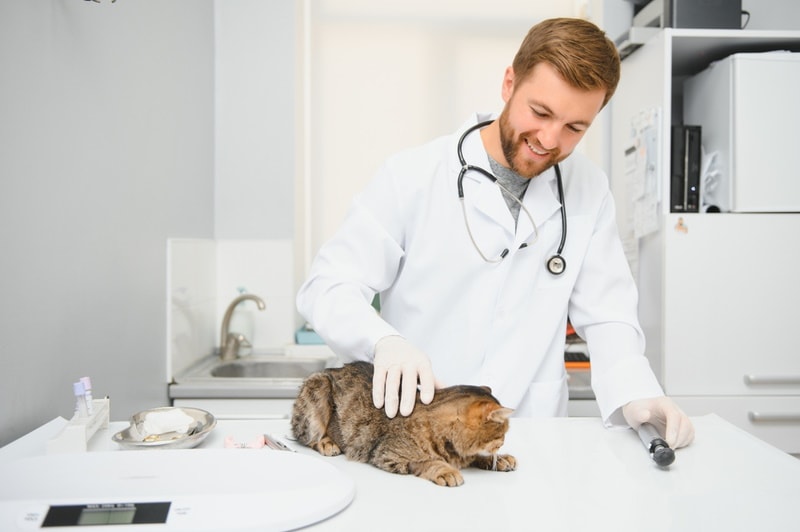
Not all pet foods are created equally, and this is important when it comes to ensuring that your cat gets enough thiamine. There is a reason that your vet usually quizzes you on your pet’s diet, down to the brand of food that they are given. Sometimes the answer to an illness lies in your cat’s food. Over the years, there have been major improvements in the nutritional balance of commercial pet foods, so the prevalence of thiamine deficiency in cats has been reduced. However, for cats that are showing signs of neurological disease, it’s still a possibility.
What Is Thiamine Deficiency?
Thiamine is vitamin B1, a nutrient that helps turn food into energy, and it is an essential component of a healthy nervous system. Since their body can’t make thiamine itself, a cat relies on dietary intake to maintain adequate levels. Cats’ thiamine requirements are comparatively high compared with dogs, requiring three times the amount!1
Organs like the brain have high energy requirements, so when the body doesn’t get enough thiamine, it can have a sudden and rapidly progressive effect on the nervous system. Clinical signs of thiamine deficiency can be seen approximately 1 week after eating a diet that has insufficient thiamine levels. After 1 month, it can be fatal if the levels aren’t restored immediately.
Thiamine deficiency leads to depletion of energy and necrosis (death of cells) of the neurons (cells that make up the nerves). Since the brain and neural tissue have a high requirement for glucose as their primary energy source, it means they are most affected by thiamine deficiency.

What Are the Signs of Thiamine Deficiency in Cats?
Signs tend to be sudden and rapidly progressive. The initial clinical signs may be vague and non-specific and include gastrointestinal issues like vomiting, a decreased appetite, and weight loss. However, thiamine deficiency is mostly associated with neurological signs. As the disease progresses, a cat may demonstrate an uncoordinated abnormal gait, tremors, head tilt, an abnormal flexion of the neck (where the head is bent toward the floor), a head tilt, mental depression, dilated pupils, blindness, seizures, and eventually, a coma.
What Are the Causes of Thiamine Deficiency in Cats?
Cats have a high dietary requirement of thiamine, meaning it’s vitally important that their foods contain adequate levels of the vitamin. There are a few factors that may influence how much thiamine they are getting from their food, and it is important to be aware of them.
First, canned diets are more susceptible to having reduced thiamine content due to the processing of these foods. High temperatures are required in the processing of canned foods to destroy pathogenic bacteria; however, this can destroy up to 50% of the thiamine content. Also, certain fish-based diets contain an enzyme called thiaminase, which can break down thiamine. So, if your cat is on a canned-food-only fish diet, they may not be getting enough thiamine.
Second, storage can affect the vitamin losses in foods. After 18 months of storage, it has been suspected that thiamine losses can be as great as 34% in dry cat food. If they are stored in hot places that have high humidity, that can also lead to thiamine loss. Note that commercially available foods that supplement with synthetic thiamine are more susceptible to having it be destroyed than plant and animal tissues that thiamine is naturally present in. So, if your cat has been diagnosed with thiamine deficiency, look at what your cat is eating and how the food is being stored.
Home-prepared diets, raw-food diets, and unbalanced commercial pet foods put cats at risk of thiamine deficiency. How the meat has been preserved, the variable amounts of thiamine among different types and cuts of meat, the amount of protein and carbohydrates, fish that contains high levels of thiaminase—all these factors influence how much thiamine a cat is getting. Commercial and reputable pet food diets go through a rigorous process of ensuring that the food contains enough thiamine by the time that it is poured into a cat’s bowl. If you are feeding your cat a home-prepared or raw diet, it can be difficult to know if they are getting the thiamine amounts that they need.
If your cat is on a well-balanced diet that has been stored as per the instructions but they still have thiamine deficiency, there might be an underlying health issue that is influencing how much thiamine they can actually absorb from their food. Certain illnesses can also cause your cat to have a reduced appetite for an extended period of time, which may mean they become thiamine deficient because they are not eating enough of it.

How Do I Care for a Cat With Thiamine Deficiency?
A cat with suspected thiamine deficiency must receive prompt treatment at a veterinary hospital. Treatment is with thiamine supplementation, which should be given by injection for several days until the neurological signs resolve. Thiamine is then given orally for several weeks.
Check your cat’s diet, and if necessary, they should change to a more appropriate one. Cats should be fed a complete, good-quality, and balanced food, rather than raw or home-prepared food. If they are already being fed a balanced commercial diet and underlying medical reasons for thiamine deficiency have been excluded, the food should be reported to the food manufacturer and to the FDA. Since 2009, there have been five major pet food recalls for thiamine deficiency in the U.S.
Signs can be reversed early in the disease’s progression. Even after adequate thiamine levels have been reached, though, there may be mild residual neurological signs. However, it is hoped that with treatment, the clinical signs associated with thiamine deficiency will resolve.
Frequently Asked Questions (FAQs)
How Is Thiamine Deficiency Diagnosed?
It can be difficult to measure the absolute value of thiamine in the body, as thiamine blood levels may not reflect tissue levels. Diagnosis is achieved multi-modally, through history, clinical signs, neurological examination, general blood and urine tests, and MRI. Other causes of neurological disease will be ruled out throughout the diagnostic process. MRI scans will show bilaterally symmetrical hemorrhage and malacia (softening) in areas of the brain, consistent with thiamine deficiency.
How Do I Prevent Thiamine Deficiency?
Ensure that your cat is on a well-prepared, commercial, balanced diet appropriate for their age. If they have periods of inappetence, make sure to get this checked out by your veterinarian.

Conclusion
Thiamine deficiency should be considered a possibility for cats showing altered mentation, vestibular signs, blindness, and seizures. Fortunately, despite the alarming nature of the clinical presentation, many cats respond well to immediate thiamine supplementation, with most cats recovering rapidly once appropriate levels of thiamine have been achieved. If you have any concerns about thiamine deficiency in your cat, have your cat visit the veterinary office for a check-up.
Featured Image Credit: megaflopp, Shutterstock







